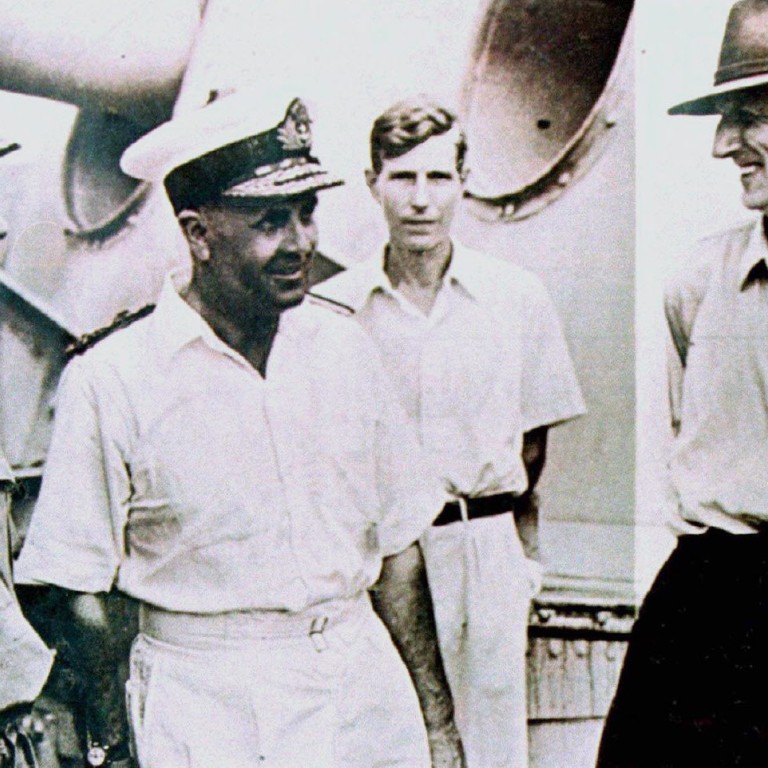
Then & now: lost fortnight
One mystery surrounding the Japanese surrender of Hong Kong reeks of conspiracy at the highest levels, writes Jason Wordie
When the Japanese surrendered in mid-August 1945, it took more than a fortnight for British forces to arrive in Hong Kong. Britain’s Pacific fleet under Admiral Cecil Harcourt was in Sydney, Australia, when the sudden news came.
They sailed immediately but it was early September before the main naval party reached the colony. What happened in the intervening period? The hithertointerned colonial secretary Franklin Gimson had himself sworn in as Officer Administering the Government, and a skeleton civilian administration was in full operation when the fleet arrived.
Top-level Allied policy dictated that Japanese surrenders were to be made to regional commanders- in-chief. Accordingly, Lord Louis Mountbatten took the Japanese surrender in Singapore as Southeast Asia command “supremo”, and General Douglas MacArthur acted in Tokyo as commander-in-chief Pacific. In the China theatre – which included Hong Kong – the appropriate authority was Generalissimo Chiang Kai-shek. So why wasn’t the Hong Kong surrender taken by the Nationalist leader?
Research published several years ago by leading British intelligence scholar Richard Aldrich hints discreetly at one intriguing possibility: that the Nationalist administration was, at a very high level, paid off not to unilaterally accept the Hong Kong surrender, which would, in turn, have pre-empted (and possibly prevented) a British return. While almost impossible to prove, the possibility certainly exists. After all, unchecked corruption was the main reason for the Nationalist government’s collapse in 1948-49.
But where would the money for such a significant pay-off have come from? A highly successful economic warfare programme, codenamed Operation Remorse, was run out of the British embassy in Chungking (modernday Chongqing), the wartime capital of China. Under its auspices, rubber was smuggled out of Japanese-occupied Malaya and French Indochina and traded on the Chinese black market. Diamonds were also smuggled, setting something of a precedent: as recent American newspaper reports made clear, Madame Chiang has not been the only Chinese first lady to be involved in this grubby business.
Machinery essential to the war effort also got through, while clandestine networks were established that enabled the purchase of vital quinine supplies from the Japanese-occupied Dutch East Indies (modernday Indonesia). Narcotics trafficking was not off the table either, if it achieved results.
In short, this extensive blackmarket/ currency manipulation racket financed Allied clandestine activities right across Asia.
Operation Remorse came under the Special Operations Executive, which had a presence in Hong Kong from 1938. Walter Fletcher, a British businessman of Austrian extraction (his original name, later changed by deed poll, was Walter Fleischl von Marxon) and later a British member of parliament, was in overall charge. To enable their work, Fletcher’s team had to find out exactly who to pay off, and when, and how much their compliance would cost.
The reasonable assumption in China during that period, based on overwhelming evidence, was that everyone – everyone – at a senior level was for sale; the only variable was the price.
Comprehensive additional research in this area may not be possible, given the limited available archives and the obvious fact that any provable case would be politically incendiary. But nevertheless, exactly why it took a large standing army positioned several hundred miles from Hong Kong – with senior Nationalist commanders just a few hours away by air – more than a fortnight not to arrive, remains one of history’s more intriguing questions.

